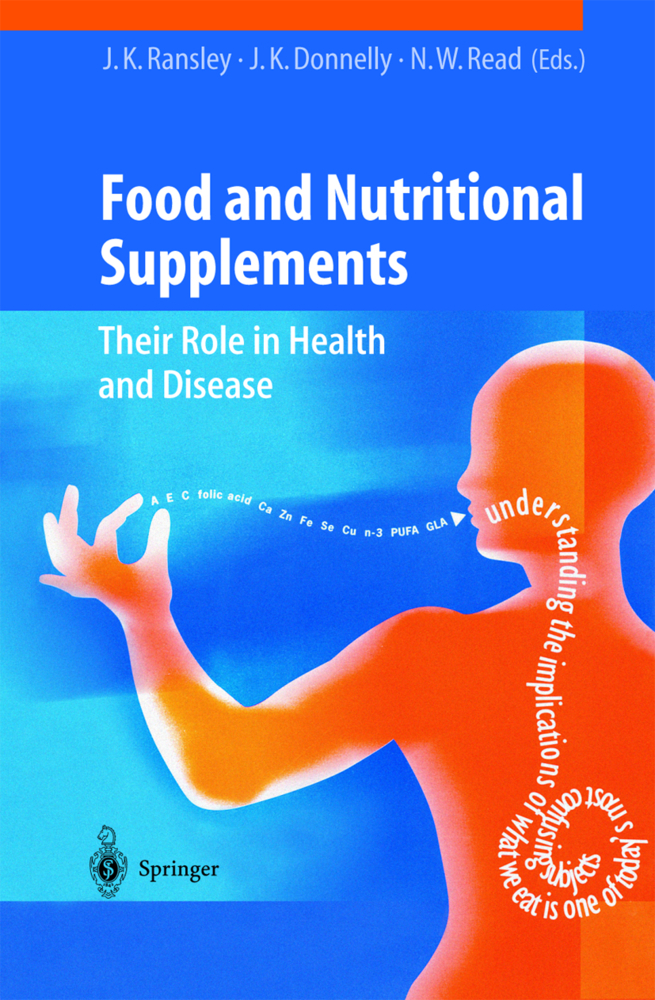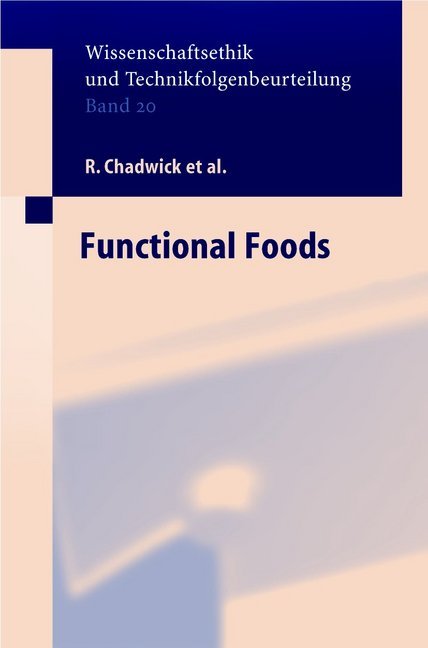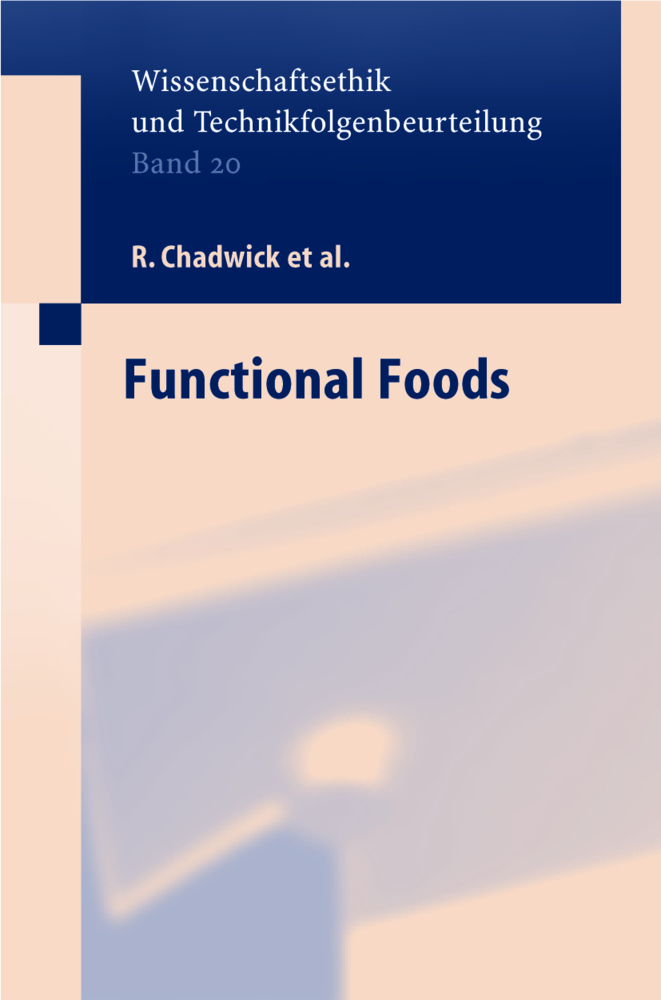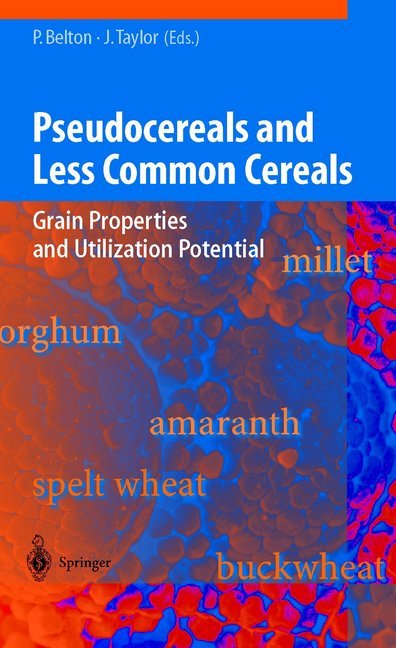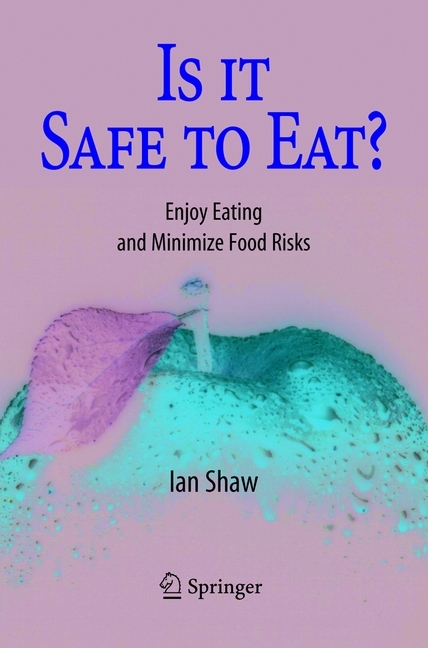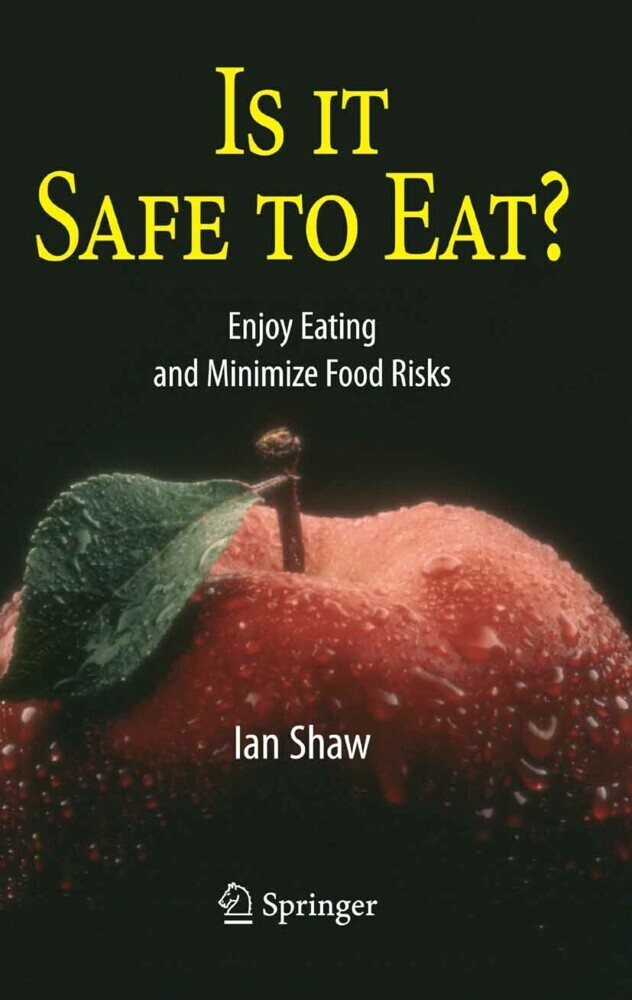Food and Nutritional Supplements
Their Role in Health and Disease
Food and Nutritional Supplements
Their Role in Health and Disease
Consumer interest in diet and nutritional supplements is increasing dramatically. Patients and members of the public are seeking advice from health professionals, nutritionists and food scientists. This book is designed to meet the needs of those professionals who are called upon to advise patients and the general public. It provides also a valuable text for those who are researchers or decision makers in the food and pharmaceutical industries. The text presents a thorough account of this topical subject and enables the reader to appreciate the functions of nutrients in health and common disease states, to understand the current debates over the roles of nutrients and supplements in the diet, and to answer those questions frequently asked by patients and consumers.
1.2 The Products
1.3 What are People Taking?
1.4 Growth Across Western Europe
1.5 Who Manufactures Vitamin, Mineral and Dietary Supplements?
1.6 Retail Distribution of Vitamins, Minerals and Dietary Supplements
1.7 What is Driving the Growth in this Market?
1.8 Do Supplement Users Need to Take Supplements?
1.9 Regulating the Market
1.10 The Future for Vitamins, Minerals and Dietary Supplements
1.11 ConclusionM
1.12 References
2 Why do Health Professionals Need to Know More About Nutrition?
2.1 Introduction
2.2 Our Hunger for Knowledge
2.3 Health Professionals: the Authorative Source of Nutrition Information?
2.4 Nutrition: the Orphan Discipline
2.5 What are the Obstacles to Giving Nutrition Advice?
2.6 The Updated Role of Health Professionals: a New Approach
2.7 Conclusion
2.8 References
3 Nutrient Requirements in Health and Disease
3.1 Introduction
3.2 What Nutrients are Needed, and How Much?
3.3 Dietary Reference Values
3.4 Meeting the Targets
3.5 Pregnancy and Lactation - Life-Long Health Implications of Nutrition
3.6 The Weaning Process
3.7 Childhood
3.8 Younger Schoolchildren
3.9 Adolescence
3.10 Adulthood
3.11 Older Years
3.12 Conclusion
3.13 References
4 Placebo and Panacea: The Healing Effect of Nutritional Supplements
4.1 Why Do So Many People Feel Unwell
4.2 The Placebo or Healing Effect
4.3 Who Responds to Placebo Medication
4.4 Nutritional Supplements as Placebos
4.5 The Ethics of Prescribing or Marketing Placebos as Nutritional Supplements
4.6 References
5 Antioxidants Nutrition and Health
5.1 Introduction
5.2 Involvement of Free Radicals in Degenerative Disease andModulation by Antioxidants
5.3 Cancer Aetiology
5.4 Cardiovascular Disease Aetiology
5.5 Reduction of Disease Risk by Antioxidant Nutrients
5.6 Cancer
5.7 Cardiovascular Disease
5.8 References
6 Nutritional and Non-Nutritional Uses of Vitamin B6
6.1 Introduction
6.2 Metabolism and Metabolie Functions of Vitamin B6
6.3 Requirements and Reference Nutrient Intakes
6.4 Potential Benefits of Higher Levels of Intake: Homocysteine Metabolism
6.5 Pharmacological Uses of Vitamin B6
6.6 Drug Interactions with Vitamin B6
6.7 Toxicity of Vitamin B6
6.8 References
7 Folic Acid and Disease Prevention:A Long Day's Journey Into light
7.1 Introduction
7.2 Folate Prevention of Neural Tube Defects
7.3 Other Congenital Malformations and Folate
7.4 Folate, Homocysteine and Occlusive Vascular Disease
7.5 Folate Requirements and Provision
7.6 Changed Diet
7.7 Supplements
7.8 Food Fortification
7.9 Conclusions
7.10 References
8 The Addition of Micronutrients to Food
8.1 Introduction
8.2 The Historical Background
8.3 Some Definitions
8.4 The Rationale for the Addition of Nutrients to Food
8.5 Policy Considerations
8.6 Legislative Aspects of Micronutrients Addition to Food
8.7 The Efficacy of the Addition of Micronutrients to Food
8.8 References
9 Probiotics and Prebiotics in Health
9.1 Introduction
9.2 Probiotic Bacteria in Human Health: An Overview Colette Shortt and Seppo Salminen
9.3 Prebiotics in Human Health: An Overview Marcel Roberfroid
9.4 References
10 Phytoestrogens and Health
10.1 Introduction
10.2 Dietary Intake
10.3 Heart Disease
10.4 Cancer
10.5 Osteoporosis
10.6 Key points
10.7 Menop ausal Symptoms
10.8 Potential Adverse Effects
10.9 Conclusions and Recommendations
10.10References
11 Dietary Supplements and their Role in the Prevention and Treatment of Coronary Heart Disease
11.1 Introduction
11.2 Evidence
11.3 Early Attempts at Dietary Modification to Prevent CHD
11.4 The Diet Trials
11.5 Homocysteine
11.6 Antioxidants
11.7 Alcohol
11.8 Plant Sterols and Stanols
11.9 Conclusion
11.10 References
12 The Scientific Basis for Fish Oil Supplementation in Rheumatoid Arthritis
12.1 Introduction
12.2 Fatty Acids in the Human Diet
12.3 The Immune System
12.4 Rheumatoid Arthritis
12.5 Eicosanoids: The Link Between FattyAcids and the Immune System
12.6 Effects of Fish Oil on Immune Function
12.7 Fish Oil Intervention in Rheumatoid Arthritis
12.8 Conclusions and Comments
12.9 References.
1 The Rise and Rise of Food and Nutritional Supplements an Overview of the Market
1.1 Introduction1.2 The Products
1.3 What are People Taking?
1.4 Growth Across Western Europe
1.5 Who Manufactures Vitamin, Mineral and Dietary Supplements?
1.6 Retail Distribution of Vitamins, Minerals and Dietary Supplements
1.7 What is Driving the Growth in this Market?
1.8 Do Supplement Users Need to Take Supplements?
1.9 Regulating the Market
1.10 The Future for Vitamins, Minerals and Dietary Supplements
1.11 ConclusionM
1.12 References
2 Why do Health Professionals Need to Know More About Nutrition?
2.1 Introduction
2.2 Our Hunger for Knowledge
2.3 Health Professionals: the Authorative Source of Nutrition Information?
2.4 Nutrition: the Orphan Discipline
2.5 What are the Obstacles to Giving Nutrition Advice?
2.6 The Updated Role of Health Professionals: a New Approach
2.7 Conclusion
2.8 References
3 Nutrient Requirements in Health and Disease
3.1 Introduction
3.2 What Nutrients are Needed, and How Much?
3.3 Dietary Reference Values
3.4 Meeting the Targets
3.5 Pregnancy and Lactation - Life-Long Health Implications of Nutrition
3.6 The Weaning Process
3.7 Childhood
3.8 Younger Schoolchildren
3.9 Adolescence
3.10 Adulthood
3.11 Older Years
3.12 Conclusion
3.13 References
4 Placebo and Panacea: The Healing Effect of Nutritional Supplements
4.1 Why Do So Many People Feel Unwell
4.2 The Placebo or Healing Effect
4.3 Who Responds to Placebo Medication
4.4 Nutritional Supplements as Placebos
4.5 The Ethics of Prescribing or Marketing Placebos as Nutritional Supplements
4.6 References
5 Antioxidants Nutrition and Health
5.1 Introduction
5.2 Involvement of Free Radicals in Degenerative Disease andModulation by Antioxidants
5.3 Cancer Aetiology
5.4 Cardiovascular Disease Aetiology
5.5 Reduction of Disease Risk by Antioxidant Nutrients
5.6 Cancer
5.7 Cardiovascular Disease
5.8 References
6 Nutritional and Non-Nutritional Uses of Vitamin B6
6.1 Introduction
6.2 Metabolism and Metabolie Functions of Vitamin B6
6.3 Requirements and Reference Nutrient Intakes
6.4 Potential Benefits of Higher Levels of Intake: Homocysteine Metabolism
6.5 Pharmacological Uses of Vitamin B6
6.6 Drug Interactions with Vitamin B6
6.7 Toxicity of Vitamin B6
6.8 References
7 Folic Acid and Disease Prevention:A Long Day's Journey Into light
7.1 Introduction
7.2 Folate Prevention of Neural Tube Defects
7.3 Other Congenital Malformations and Folate
7.4 Folate, Homocysteine and Occlusive Vascular Disease
7.5 Folate Requirements and Provision
7.6 Changed Diet
7.7 Supplements
7.8 Food Fortification
7.9 Conclusions
7.10 References
8 The Addition of Micronutrients to Food
8.1 Introduction
8.2 The Historical Background
8.3 Some Definitions
8.4 The Rationale for the Addition of Nutrients to Food
8.5 Policy Considerations
8.6 Legislative Aspects of Micronutrients Addition to Food
8.7 The Efficacy of the Addition of Micronutrients to Food
8.8 References
9 Probiotics and Prebiotics in Health
9.1 Introduction
9.2 Probiotic Bacteria in Human Health: An Overview Colette Shortt and Seppo Salminen
9.3 Prebiotics in Human Health: An Overview Marcel Roberfroid
9.4 References
10 Phytoestrogens and Health
10.1 Introduction
10.2 Dietary Intake
10.3 Heart Disease
10.4 Cancer
10.5 Osteoporosis
10.6 Key points
10.7 Menop ausal Symptoms
10.8 Potential Adverse Effects
10.9 Conclusions and Recommendations
10.10References
11 Dietary Supplements and their Role in the Prevention and Treatment of Coronary Heart Disease
11.1 Introduction
11.2 Evidence
11.3 Early Attempts at Dietary Modification to Prevent CHD
11.4 The Diet Trials
11.5 Homocysteine
11.6 Antioxidants
11.7 Alcohol
11.8 Plant Sterols and Stanols
11.9 Conclusion
11.10 References
12 The Scientific Basis for Fish Oil Supplementation in Rheumatoid Arthritis
12.1 Introduction
12.2 Fatty Acids in the Human Diet
12.3 The Immune System
12.4 Rheumatoid Arthritis
12.5 Eicosanoids: The Link Between FattyAcids and the Immune System
12.6 Effects of Fish Oil on Immune Function
12.7 Fish Oil Intervention in Rheumatoid Arthritis
12.8 Conclusions and Comments
12.9 References.
Ransley, J.K.
Donnelly, J.K.
Read, N.W.
| ISBN | 978-3-540-41737-8 |
|---|---|
| Artikelnummer | 9783540417378 |
| Medientyp | Buch |
| Copyrightjahr | 2001 |
| Verlag | Springer, Berlin |
| Umfang | XVI, 197 Seiten |
| Abbildungen | XVI, 197 p. |
| Sprache | Englisch |

